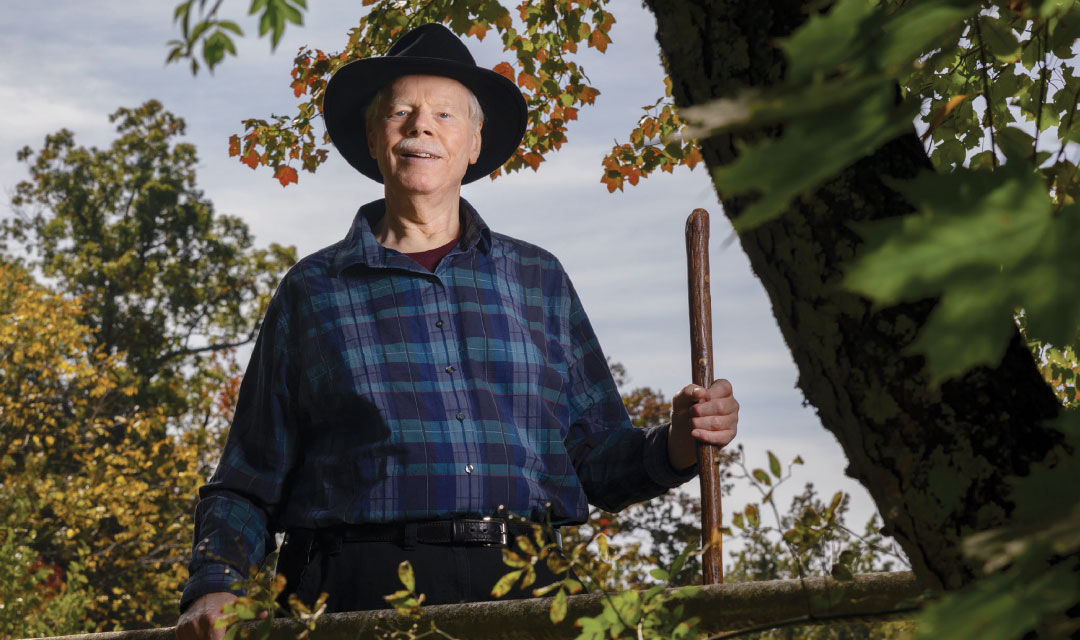"Pain that literally had me in tears was instantly gone and hasn’t been back since."

Peter Kenny has always sought to be active. To him, movement is a key to feeling alive, healthy and sharp. Even when working as a licensed engineer and planner, the now-retired 68-year-old Ewing resident took stairs instead of the elevator. He encouraged his team to be active as well by, for example, meeting clients face-to-face rather than making calls.
Yet activity was often difficult. Much of Peter’s adult life was marred by severe back pain stemming from an active life of skiing, motorcycle riding, climbing, hiking and a busy job. “It was the kind of pain that kept me up at night,” he says. “It had me hollering and crying at times.”
Pain was compounded by a 2018 diagnosis of anal cancer. He underwent chemotherapy and radiation to treat his cancer, but his back pain only worsened. His nerves seemed haywire: Signals in his spine were excruciating, but lower down, his feet became numb.
A Structural Problem
Peter sought help from Pavli Demian, DO, a pain management specialist at Robert Wood Johnson University Hospital (RWJUH) Hamilton’s Pain Management Center. Conservative measures such as physical therapy and medication didn’t seem to help. Dr. Demian tried injecting the steroid cortisone into Peter’s spine to reduce inflammation and swelling. Such epidural injections often provide at least partial or temporary relief, but results can be mixed, especially when pain is severe.
It was time to consider another step: surgery to fix any structural problems.
An MRI and X-ray provided a clearer picture of what was going on. Peter’s spine showed signs of severe spinal stenosis. This condition occurs when spaces in the spine become narrowed due to factors such as injury or arthritis, placing pressure on nerves running through the spinal canal.

Matthew McDonnell, MD, a board-certified orthopedic spine surgeon at RWJUH in New Brunswick, saw Peter’s case as urgent.
“The steps we normally start with for symptomatic spinal stenosis—physical therapy, medication, epidural injections—had already been attempted,” he says. “Surgery to fix the structural problem was clearly necessary.”
The operation was scheduled for March 18, 2022. In a procedure that lasted more than two hours, Dr. McDonnell first performed a laminectomy to remove bone and open the spinal canal, creating more room and easing painful pressure on Peter’s nerves.
Dr. McDonnell then also addressed spinal instability due to arthritis by performing a fusion in which the spine was shored up using materials such as screws, spacers and bone grafts.
Relief At Last
Peter felt relief immediately after surgery. “The pain I had every night for years—pain that literally had me in tears—was instantly gone and hasn’t been back since,” he says. “The numbness in my feet also alleviated to the point where I could actually feel my toes and walk better because I had communication between my legs and brain.”
Care providers continued monitoring Peter in the recovery unit over the next couple of days as he took medications to help control initial post-surgical discomfort and worked with physical therapists. “Our therapists made sure he could get out of bed OK and was getting around safely,” Dr. McDonnell says.
When Peter returned for a follow up with Dr. McDonnell two weeks after discharge, his recovery seemed to be progressing unusually fast—testimony to his determination to improve his health through mobility.
Peter wasn’t the only one who felt good. “One of the most rewarding parts of my job is seeing how patients whose pain and disability we’ve relieved return to the things in life that they love most and regain their quality of life,” Dr. McDonnell says.
Peter’s wife of 45 years, Lynn, can attest to that. She says the procedure gave her back her husband. “Now that he’s had this surgery and Dr. McDonnell did such a wonderful job, I can talk to Peter again and not worry that he’ll be in agonizing pain if we were to do something like go on a trip together,” she says. “We’ve rediscovered each other and have fallen in love all over again.”
Recognized for Excellence in Spinal SurgeryRobert Wood Johnson University Hospital (RWJUH) has earned The Joint Commission’s Gold Seal of Approval for Disease-Specific Care Certification for Spine Surgery by demonstrating continuous compliance with high performance standards. Gold Seal recognition entails a rigorous onsite review and reflects a health care organization’s commitment to providing safe and high-quality patient care. Spinal surgery is recommended for patients who have had serious injuries or have tried other treatments that have not alleviated symptoms. Board-certified surgeons at RWJUH’s Spine Surgery Program have completed advanced orthopedic surgery training and provide comprehensive assessments and treatments for conditions of the spine, back and neck. Common procedures that can help relieve impingement or pressure on spinal nerves include:
|
Learn more about orthopedic surgery at Robert Wood Johnson University Hospital.